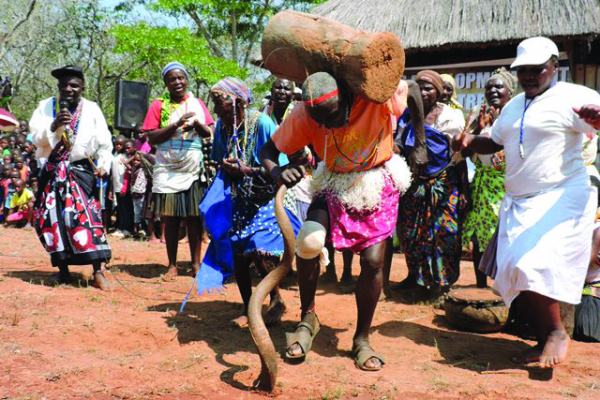
LAST week, the country joined the world in commemorating International Women’s Day and women in the Ndau communities of south western Zimbabwe were not left out, as they were hailed for helping develop the endurance and resilience of the Ndau culture through preservation of its values.
BY TINASHE MUCHURI
The commemorations were marked with Ndau dances, singing and instrument playing through which women in the community could also showcase their skills.
Ndau people are found concentrated in Chimanimani and Chipinge districts of Manicaland. They are renowned for their hospitality, something we enjoyed recently during the Ndau Festival of the Arts.
One can only fall in love with their culture, craft ware and dances. In most of their dances — such as madanda or mhongo — women play the leading roles. Madanda is a dance through which water spirits are appeased.
According to those well-versed with the culture, the dance is usually done by people possessed by water spirits, but can also be engaged in for purposes of entertainment. Egg-shaped drums with flat tops covered by cow hide called deze are played using sticks with their tips covered with rubber from second-hand vehicle tyres. This is an innovation that has helped the drum produce better quality sound. In the past, however, mere sticks were used.
Another dance, zvisora or zvipunha, is done by both females and males possessed a young girls’ spirit. According to lore, these are spirits of girls who either died before they got married or never engaged in sexual intercourse.
Although the spirit is said to possess both men and women, the former tend to suppress it as it does not fit in with patriarchal notions of the dominant male. Men possessed by this spirit were often laughed at as they would wear ear rings and engage in dances imitating women’s movements. It is believed these spirits possess the living so that the chosen vessel can entertain others, enjoy life and even cure diseases. These are accompanied by drums played for popular dances like muchongoyo.
- Chamisa under fire over US$120K donation
- Mavhunga puts DeMbare into Chibuku quarterfinals
- Pension funds bet on Cabora Bassa oilfields
- Councils defy govt fire tender directive
Keep Reading
Hondora is a hunting dance played by men and women, as they prepare to go for hunting or after successful hunting expeditions. It involves both females and males and acknowledges inclusive hunting methods including nets and wire traps. The small drum, as the one played for muchongoyo dance is played with a stick on one side. Women can play this drum while men and women imitate hunting escapades with bows and arrows (ready to shoot) or with men blowing a horn or carrying a wooden mortar representing bounty from the forest.
Muchongoyo is a war celebration song sending out warriors to a war situation or receiving warriors from war. Females play the small drum while males play the bigger drum (chimudumbana). The dancing floor is for everyone. Instead of women just coming to urge men that would have fallen to the ground to stand up and continue with the fight, they can also dance together with the men. Women are not bystanders as there were also female warriors in the past. The dance also involves singing and playing the drum. Ndau dances include and are not restrictive as other dances from other tribes, where drums are played by men with women relegated to dancing, singing and rattle shaking. In Ndau, both men and women can lead a song, play drums, dance and shake the rattles.
Playing the drum is a big feat for both men and women in the community. It is compared to the role of an instructor or teacher, who barks orders to those on the dancing floor. It is also taken as a leader’s role as it leads the dancers to make certain movements according to the drum beats. It is a skill that requires acumen to entice the ears of dancers to mesmerise the audience.











